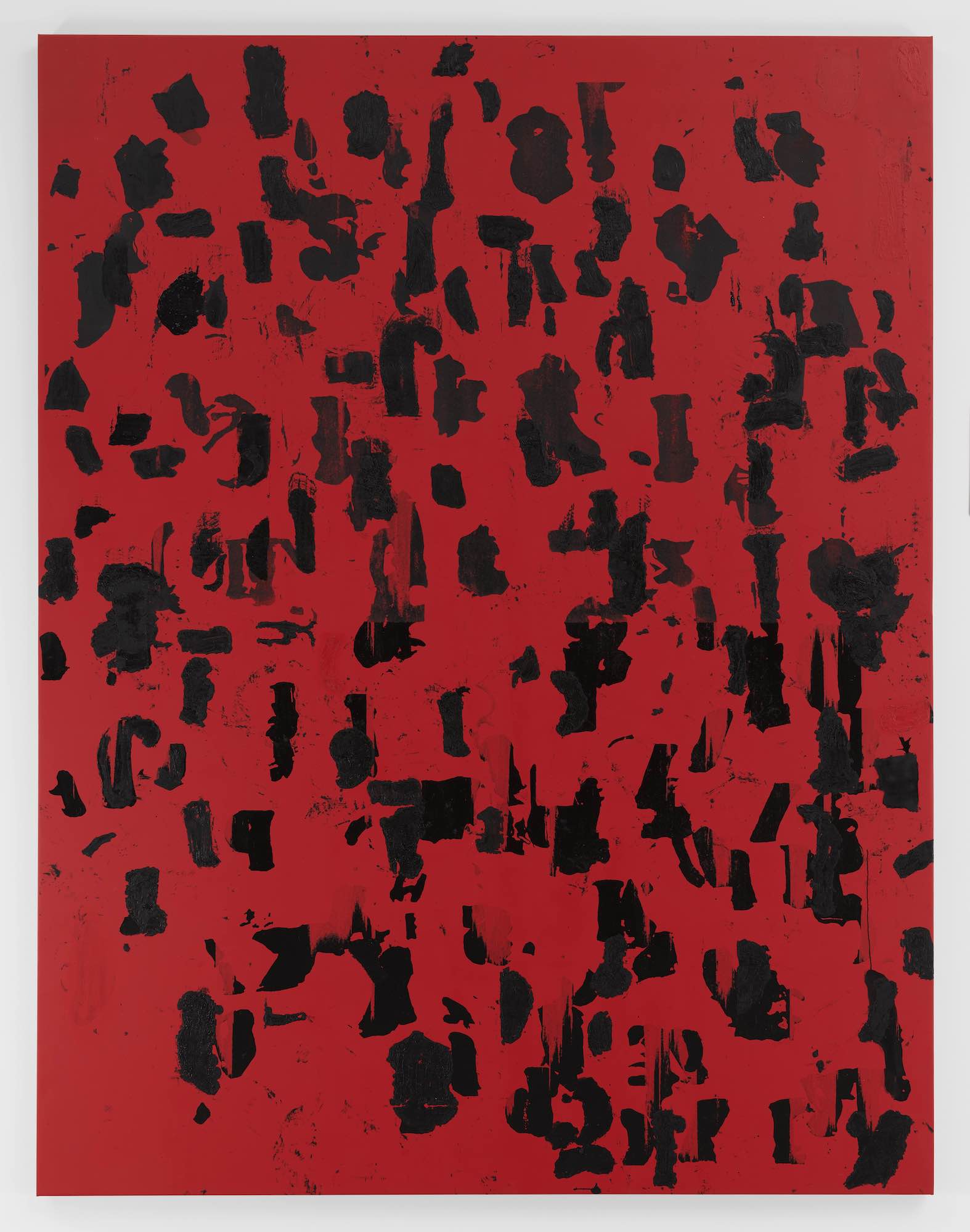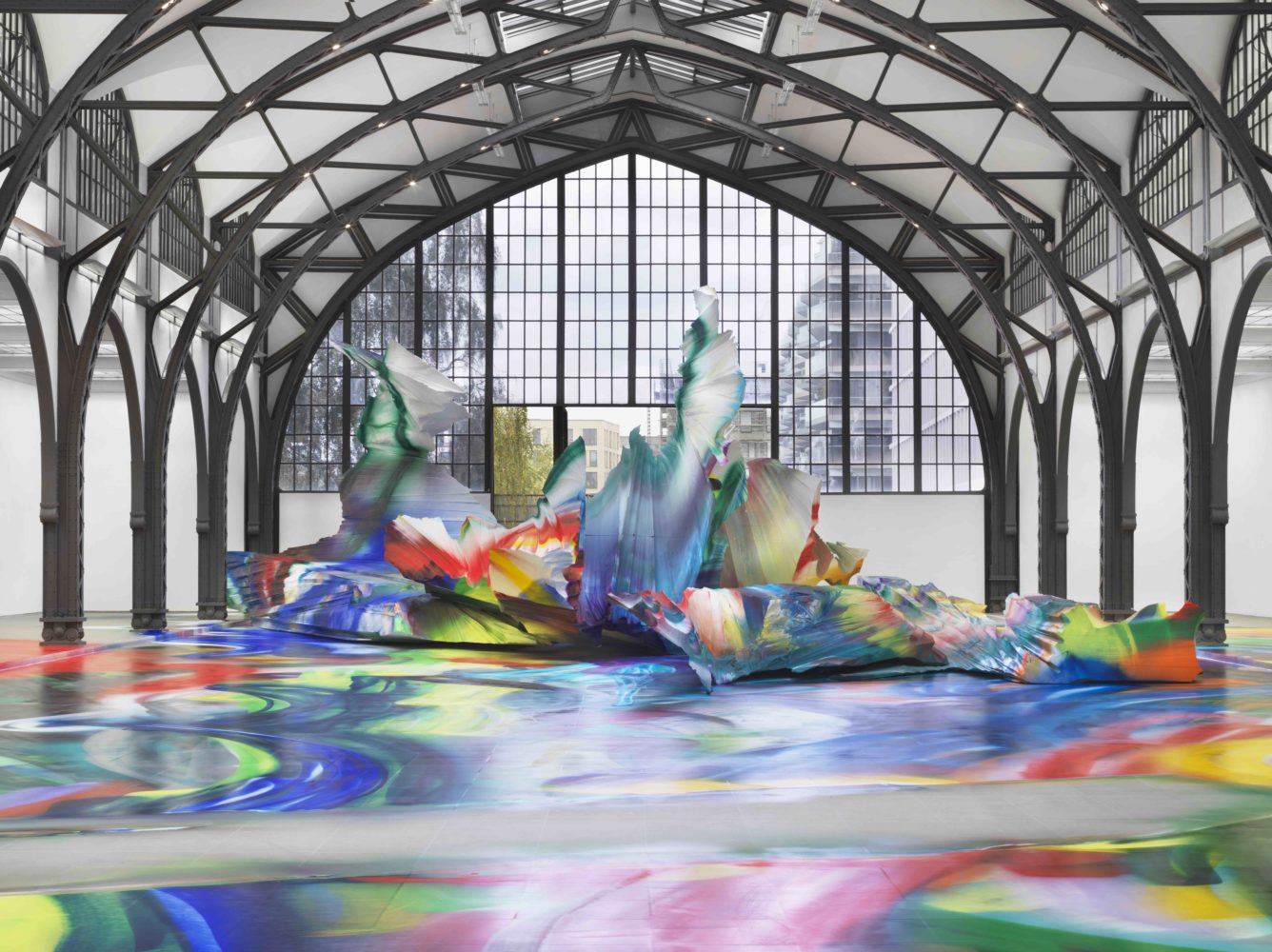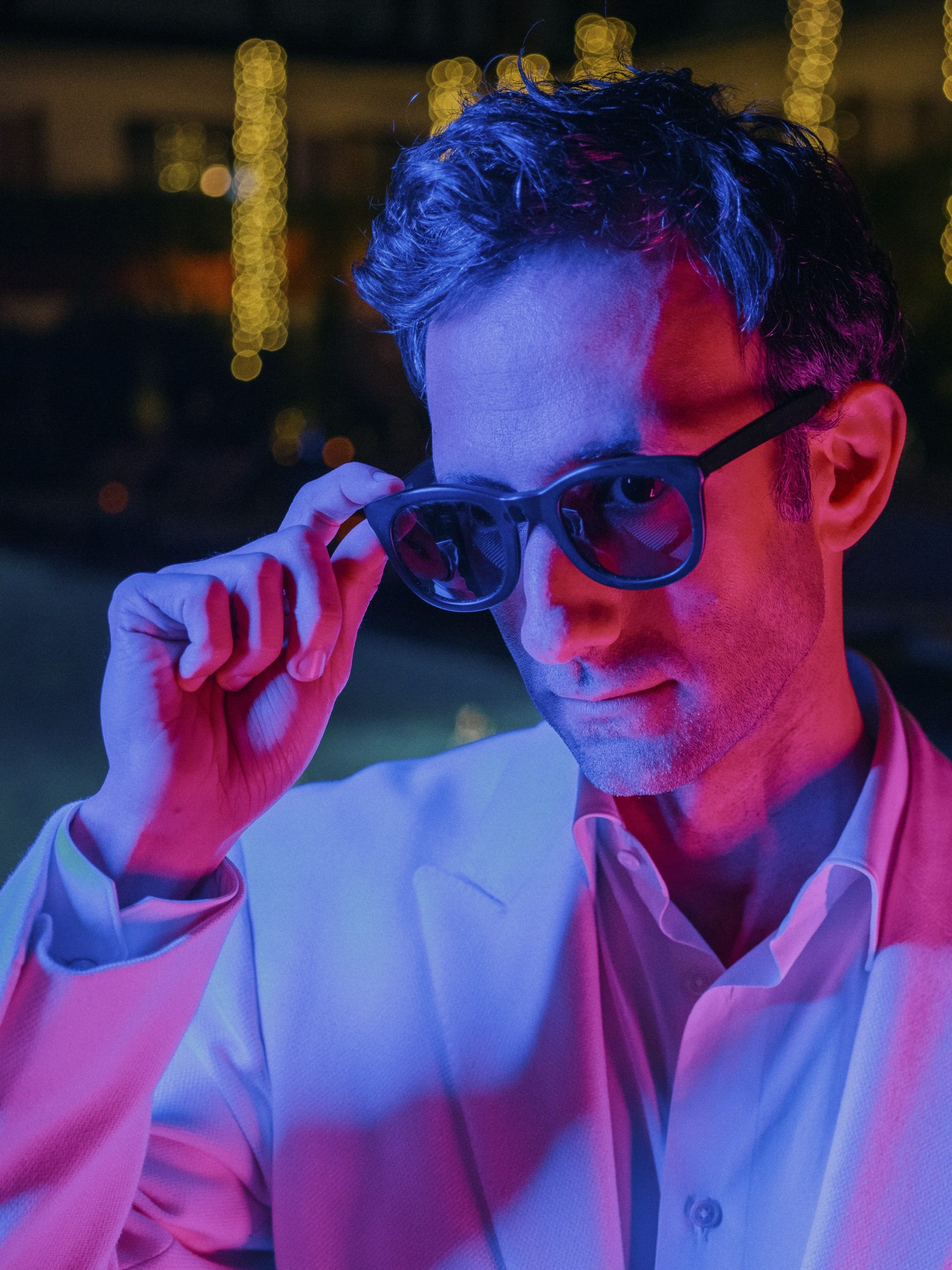This spring the artist Rafael Y. Herman laid out an interactive display of ethereal photographs, draped under 17th-century fresco ceilings in Palermo’s Palazzo Sant’Elia, opening a dialogue with the audience on the nature of light and dark. Entitled “ESSE” and on view through June 22, it consists of 16 monumental works, spread out over 1,000 square meters of juxtaposing rooms. Surreal landscapes emerge out of pools of darkness like revelations, capturing the imperceptible and imaginary in an alternate reality where dark emits light.
The show, pulling together pieces past and new, opened on “la Giornata de la Terra” (Earth Day), April 22, 2022, at the stroke of midnight. The first in a series of exhibitions heading from Palermo to New York, it unveils landscapes free of light pollution, taken within the late hours of the night, regaling audiences with unnatural colors and evanescent forms out of the range of everyday sight.
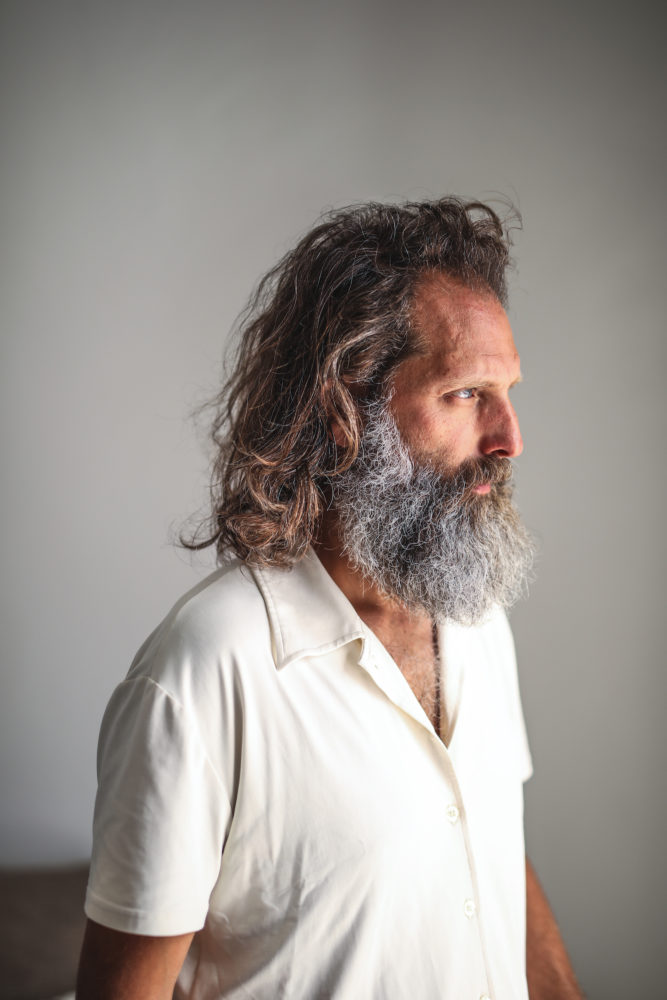
Rafael Y. Herman, photo by Zohar Shitrit, courtesy of Herman studio.
Whitewall met with Herman and sat on the Palazzo’s main floor, inches away from his work temporis lapsus, which hung, paper-thin, from a couple of darkroom clips, and delved into a line of questioning that met with unexpected jest. Intrigued by his lifelong passion for finding light in the dark, we began with what seemed like a logical approach, inquiring about the starting point of his work. Herman’s response, as teasing as it was musing, went along the lines of, “That’s been asked of me many times. It’s always what makes people curious, how did I start.”
As he explained, Herman, on the other hand, always saw things in reverse. With a penchant for confoundment, apt at thinking outside the box, he “always tries to generate curiosity from the audience,” whether in the conception of his work, “finding lightness in the dark,” his submission to deliberate blindness in order to “decontaminate the work of their subjective influence,” or his precise and calculated emplacement of each artwork, disposed on opposing sides of adjacent rooms, proceeding in a zigzag of motion capping each spectator’s peripheral vision to a single work.
It was an art form born out of a metaphysical curiosity for “how things are” instilled in him from a young age. Herman told us how, in Israel, in the desert where he grew up, he would spend hours and hours in the depth of the night, wandering, and wondering about where colors would go when deprived of the light.
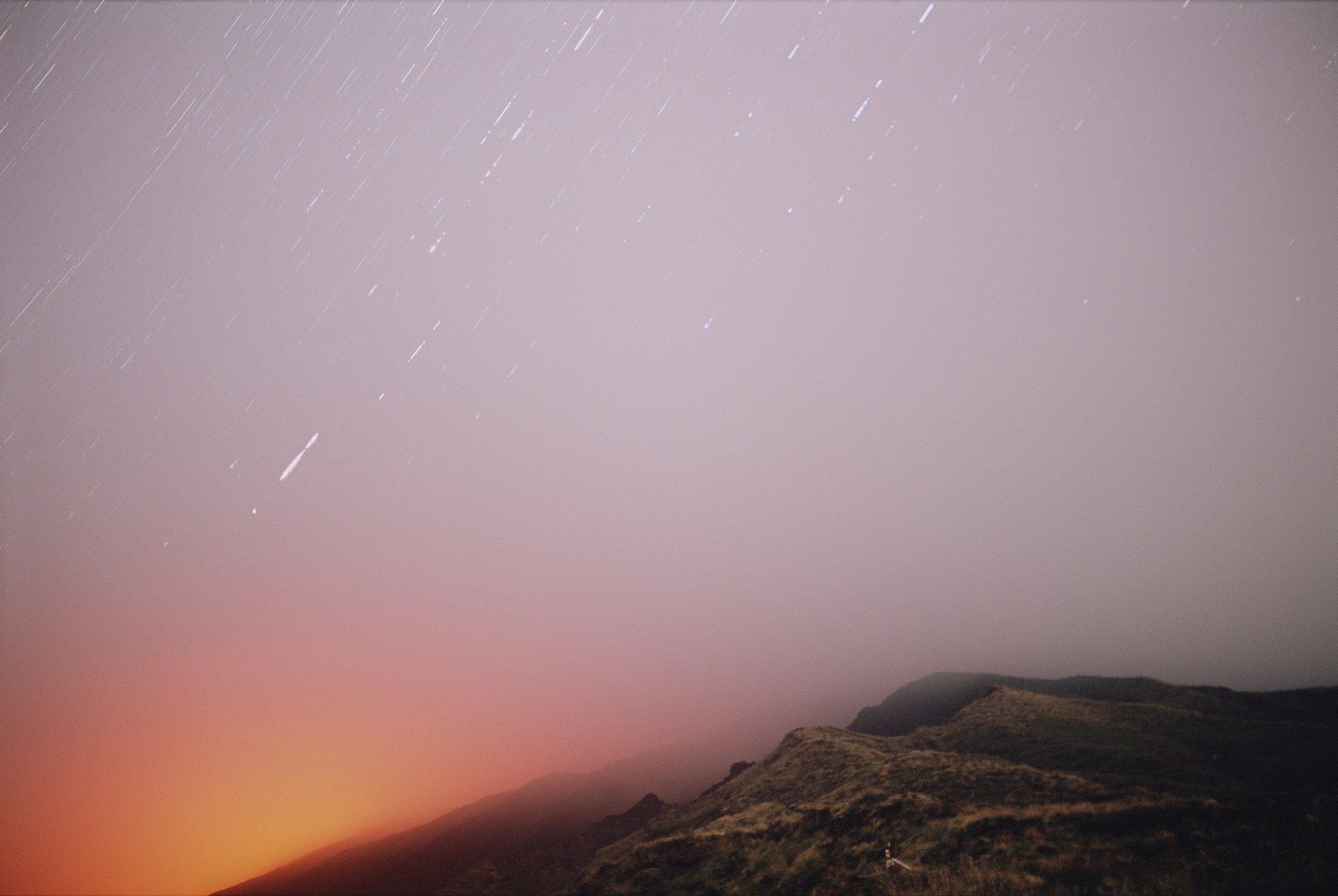
Rafael Y. Herman, “Coniuctis,” 240 x 360 cm, photo by Umberto Santoro, courtesy of Herman studio.
“It started from a curiosity for colors,” he said. Having “observed the surrounding, I noticed the colors, well, the missing colors of night.” Satiating said curiosity with lengthy observation, he started to spend his nights in his father’s truck, overlooking the so-called missing colors of the night. In such moments, Herman’s brain would generate questions like: “What would be a color when there is no light to define it?” And subsequently reason, “If I tried to work with no light, then could I define it?” Investigating light as a physical element, he surmised that only in its absence would he be able to find out.
Out of such reflections arose the process of his art. Positioning himself in deliberate blindness to both capture the dark and prevent himself from conditioning the work through his selective process—Herman set off for wild and distant places unpolluted by light, far from cities, towns, villages, and the like. Guided intermittently by both locals and topography, he found remote mountaintops, small islands, seaside areas, and, irony of ironies, with photography as a medium, an inherent light woven into the darkness of the night. Pure, natural, sitting in stillness, invisible to the naked eye that, through the lens and manipulation of his camera, he could unmask: “The process is a manual calculation that I developed to measure the absence of light, based on the assumption that there is always light, even in the dark.” Delineating a process as cryptic as the Latin names he adjoins to his works, he seeks not to create the light, but, rather, to “cut out the light that conditions what we see,” revealing to us an “alternate reality.”
As a “conceptual work about the nature of vision,” he creates a “non-place” lying somewhere between reality and fiction, finding home neither in the day or night, but merely in the works themselves. In a place where light conceals reality rather than reveals it, the dark acts as the opposite, tracing out familiar but different outlines, unlike our light-conditioned world. Delineating odd shadows, color spectrums, and light patterns that differ from the reflections we know, the works mimic scenes of reality while offering insights into one the naked eye cannot see.
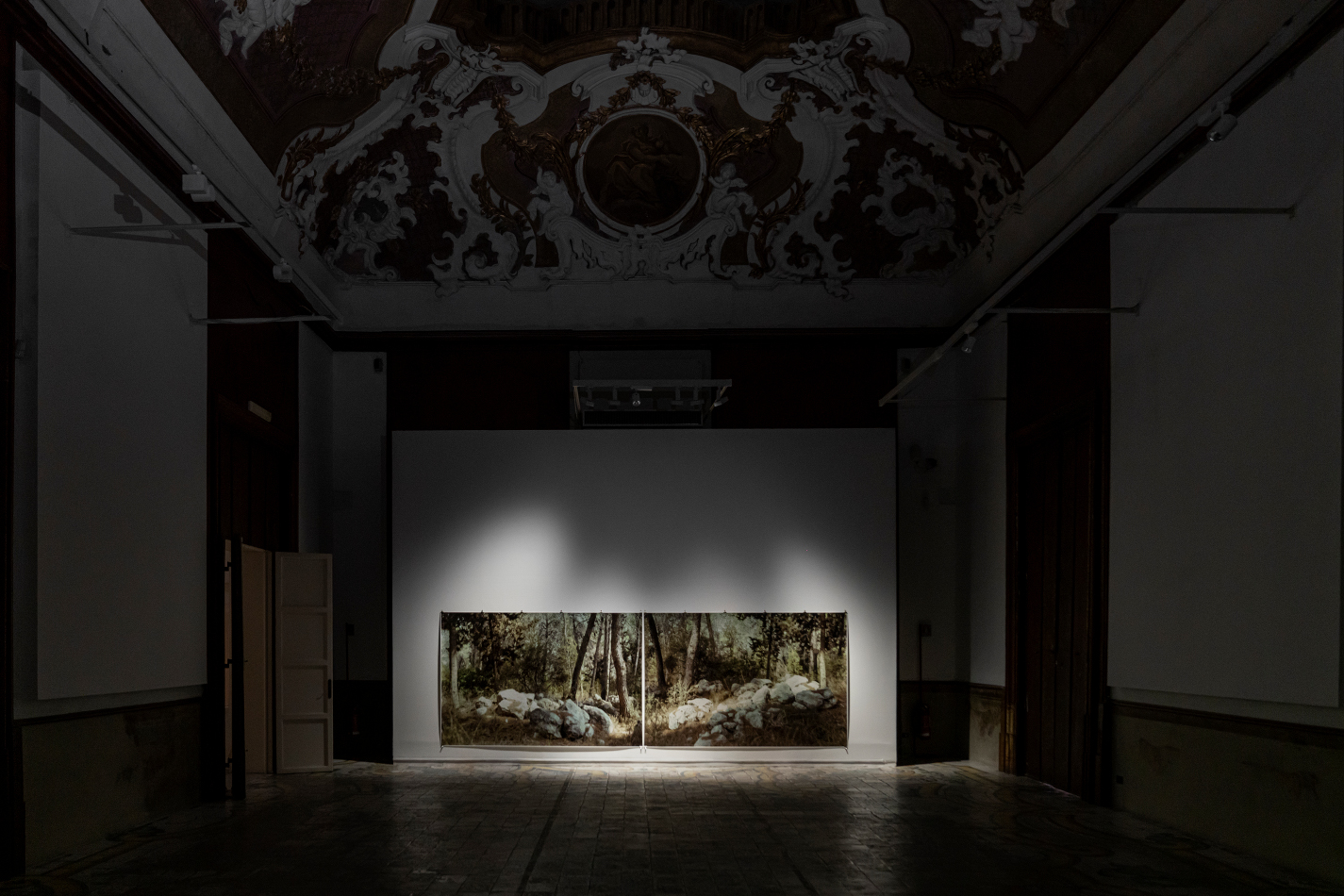
Installation view of Rafael Y. Herman’s “ESSE” at Palazzo Sant’Elia in Palermo, photo by Umberto Santoro, courtesy of Herman studio.
Through this art form about holding space for alternative versions, Herman makes a request from his audience to open their minds and find the multitude of possibilities that lie in every moment, situation, or, in this case, landscape. A mindset embedded into the very name of his series, “S” or “ESSE” holds mutually significant meanings. Taken horizontally, it alludes to Sicily, the place to which the exhibit is dedicated and where the works were mostly conceived, but vertically, invokes what the artist calls “the sign of incomplete infinity.” An incitement to “have another point of view,” bringing “another type of ‘S’ and another Sicily” to the table, it also represents a “cut,” “half infinity,” referring to “the environmental challenge of light pollution.” A term defining the presence of unwanted, inappropriate, and excessive artificial light, it bears devastating effects on the planet that reach far outside the canvas of Herman’s work. Bearing detrimental effects on biodiversity, menstrual cycles and sleeping patterns, the reasons for addressing it are endless and, as the clock turns and the window of opportunity for addressing it gets smaller and smaller, we will only have an “incomplete infinity” of ways in which to do so.
While adamant not to label himself an activist, he concedes that the nature of his work and the necessity for “places with no light interruption” have led him down the path of environmental activism. With 83 percent of us now living under light-polluted skies, remote spots free of light pollution have become increasingly hard to find, their byproducts as detrimental to us as the fauna and flora around.
In Italy, where the conception of Herman’s exhibit first started, few are the regions free of light pollution where Herman could fulfill his work, among them the beautiful Valle D’Aosta and the Madonie mountains. If we hope to maintain these relics to the state of upkeep we bequeathed the Palazzo’s fresco ceilings, we are all to make more changes. But, who knows, taking Herman’s word, the possibilities are endless.





